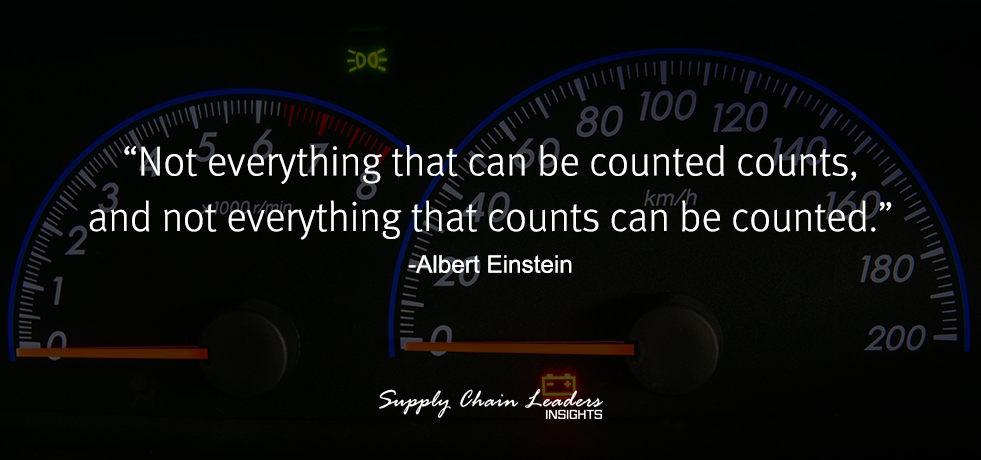7 Success Factors for Supply Chain Benchmarking
As you will know if you read our recent post on common supply-chain knowledge gaps, supply chain benchmarking is one of those areas in which companies sometimes lack the knowledge to avoid costly mistakes. That’s why we decided to publish this post, covering some essential things that supply chain leaders should know before embarking on benchmarking projects.
Even if your company already has some experience with benchmarking, or you are not planning an imminent supply-chain benchmarking project, you might find the following seven mini-guides worth your attention, if only to help you fill some knowledge gaps within your organisation.
7 Things You Really Should Know About Supply Chain Benchmarking

1. Why You Want to Benchmark
Companies that struggle with supply chain benchmarking, sometimes do so because they fail to define a clear scope for their projects. Instead, they set out to benchmark the entire supply chain from end-to-end in one fell swoop, which honestly, is not a good idea. In many cases, the task becomes simply too vast to execute effectively, and the anticipated insights remain elusive.
Determining scope is a crucial step for successful supply chain benchmarking, but you might struggle even to do that if you don’t first define what you want to achieve.
There are numerous reasons to benchmark supply-chain performance, each of which will drive the shape and size of your project, as well as the way it will be executed. Some of the most commonly cited purposes of supply chain benchmarking are:
- To understand how the supply chain performs in comparison with competitors’
- To establish how a supply chain operation compares with best-in-class performers
- To identify and adopt internal best practices
- To develop accurate measures of productivity and customer service
- To compare performance and practices of specific business functions within an industry sector
- To identify best practices within one’s industry or among enterprises with similar supply chain characteristics
A project to benchmark perfect-order performance of a warehousing and distribution operation, for instance, would have a very different scope and set of goals than one focused on supply chain cost-effectiveness and asset utilization.
While it might seem tempting to benchmark the entire supply-chain and break down the results to suit specific purposes, in reality, this approach can easily lead to confusion and even adoption of inadequate performance measures. Better results will be assured if you set a specific goal for your benchmarking exercise, plan the project scope and timeline to meet that objective, and then execute accordingly.

2. What You Want to Benchmark
When you are clear on why you want to conduct supply chain benchmarking, it will be easier to decide what to measure. In this section, you will find some brief, hypothetical benchmarking scenarios for supply chain and logistics operations. First, though, consider some of the circumstances that might prompt your company to benchmark logistics performance:
- If you are an asset-based third-party logistics provider, your operational existence depends 100% on the ability to offer the best possible service.
- You might want to step up environmental practices and therefore wish to benchmark your operation on sustainability performance.
- If you are a retailer or manufacturer with in-house warehousing and transport operations, benchmarking can help you decide how to differentiate your business through service excellence.
So now, let’s look at some possible supply chain benchmarking targets in a little more detail:
Warehouse Performance: How productive are your company’s DCs and warehouses? Are your warehousing costs comparable with the best? If not, what best practices can you implement to reduce operational expenditure? How well do your operations compare in terms of efficiency, health and safety, or capacity utilisation? Warehouse benchmarking can help you get a handle on issues such as labour costs, occupational and property costs, order fill performance, accident prevention, and inventory management.
Transport/Fleet Performance: Whether you are a manufacturer, retailer, or service provider, it’s critical that any transportation assets you own are utilised effectively. Transport benchmarking can show you how efficiently your fleet is operating compared to leading fleet operators, as well as helping you understand cost performance in areas such as fuel consumption, maintenance, and tyre wear.
Sustainability Performance: Sustainability is a relatively new element of supply chain operation and therefore, one about which plenty is still to be learned. At the same time, the pressure to operate in a carbon-neutral and environmentally friendly manner is mounting steadily. Benchmarking can help you compare your organisation’s sustainability performance and costs against other supply chains.
When appropriately managed, sustainability efforts can reduce costs and increase efficiency, even while improving corporate responsibility, so there has never been a better time to know where your company stands in this growing area of potential competitive advantage.

3. The Importance of the Right KPIs
Once you know what areas of the supply chain you wish to benchmark and why, you will be in an excellent position to determine the measurements necessary to compare performance with that of a peer group (or to compare internal operations, if you are conducting an internal benchmarking exercise).
But here too, mistakes are possible, particularly if your team lacks knowledge and there is no external partner to guide the benchmarking process. However, errors are less likely if you clearly define your project purpose and scope, as described in the first few paragraphs of this post.
You might choose to use end-to-end supply chain metrics, such as:
- Delivery performance KPIs
- Inventory management KPIs
- Supply chain cost metrics
- Cycle times
Alternatively, you might be interested in benchmarking specific processes, such as planning, procurement, manufacturing, or logistics. End-to-end KPIs tend to be more customer-focused, while individual-process KPIs typically monitor internal efficiency and financial performance, although there are exceptions to both these rules.
Another possibility is to split the supply chain into segments. You could run a project to benchmark the inbound supply chain, and another project later for the outbound process, or vice versa.
Unless you have a very compelling case for focusing on one over the other, it’s a good idea to choose a range of KPIs that provide a balance of internal and customer-facing measurements. Apart from balance, a few additional golden rules apply to the selection of supply chain benchmarking KPIs:
- Avoid having metrics which duplicate or overlap one another
- Make all KPIs simple and understandable to everybody in your organisation
- Strive to get the full picture of performance with as few KPIs as possible

4. How to Choose a Benchmarking Peer Group
If your company is conducting an internal supply-chain benchmarking project, you’ll be spared the effort of peer selection, which is probably one of the trickiest elements of external benchmarking to get right. If you are going to measure your supply chain against others though, the following tips will help you to avoid some of the pitfalls of peer group selection.
Peer group selection can be taxing from the very outset, which is why many organisations choose to work with a partner specialising in becnhmarking data.
To be successful, benchmarking must be a collaborative process (more on that later). Without active collaboration, available data is likely to be scant; restricted to that which other companies are prepared to make public. A benchmarking partner can help by connecting you directly with an active peer group or by providing access to databases from which you can select metrics and choose organisations against which to compare performance.
When benchmarking, some companies gravitate towards performance comparisons with competitors, or (if competitor data is not available) with non-competing companies in their industry sector. Seldom though, is this the best way to derive value from supply chain benchmarking.
By comparing your supply chain with those of other industries though, you are more likely to find ideas and opportunities to differentiate service from that of your competitors. Regardless of the verticals you target, however, it makes sense to look for a peer group with supply chain characteristics similar to that of your own business.

How to Match Supply Chains for Comparison
At this point, you may be thinking that supply chains in other industries are not comparable to your own. However, you might be surprised at just how many similarities you might find—and you don’t have to look that hard to identify them.
Let’s take a quick look at some supply chain characteristics that you can compare across industries. For instance, you might look for operations that are similar to yours in the following ways:
- The number of different SKUs in the company’s inventory
- Transactional levels
- Types of picking in the warehouse (pallets, split pallets, cases, split cases, individual units)
- Size and characteristics of the customer base
- Customer service expectations
- Order sizes
Remember too, that you don’t necessarily need to look for supply chains that, on their own, match all of the characteristics you wish to benchmark, although if you can find one or two that do, it will be a big help.
As you will be benchmarking against a range of KPIs though, it can suffice to find one or two peer organisations that have a similarly sized range of SKUs, and another one or two with similar customer service requirements, and so on. There is also nothing wrong with mixing and matching peers from within your own industry and those in other sectors.

5. How to Keep Supply Chain benchmarking on Track
In the previous sections of this post, I was trying to draw your attention to those benchmarking principles that companies most often miss (or at least fail to appreciate sufficiently). If you get those points right, you significantly increase the likelihood of benchmarking success.
That said, it is also worth discussing the need for a systematic and methodical approach to benchmarking. You may have noticed the frequent references in this article to benchmarking as a project. Those references are no accident.
Benchmarking is not something to squeeze into gaps in day-to-day business management activity. It should be treated as a continuous project, with resources dedicated to the necessary tasks, and a timeline that ensures momentum from start to finish.
For best results, break your benchmarking project down into the following steps:
1) Establish why you wish to benchmark your supply chain and which elements/processes you will study.
2) Determine the scope of the benchmarking project.
3) Map the “as-is” state of the processes you will benchmark.
4) Develop the KPIs you will use to measure performance.
5) Select a “benchmark” company or peer group (if yours is an external benchmarking project).
6) Gather the benchmarking data.
7) Analyse the gaps in performance between your supply chain and that of the benchmark.
8) Identify the best practices driving success for peer-group top performers.
9) Determine how to adapt best practices and use them to drive supply chain performance.
10) Prepare and present business case/action plans for improvement.
After completing these ten steps, you should effectively be transitioning from benchmarking to a business improvement process, assuming your executive team approves the business case.

6. Don’t Confuse Benchmarking with Other Forms of Information-Gathering
As part of a list of things that you should know about supply chain benchmarking, it seems prudent to warn against another common error arising from a lack of knowledge. That error is to confuse benchmarking with other information-gathering techniques such as research, or data acquisition through so-called benchmarking surveys.
That is not to say that surveys and research are any less credible methods of gathering data, but as catalysts for improvement, they are unlikely to be as effective.
For sure, you can find companies that, for a fee, will provide you with current performance statistics for a range of organisations. However, unless such a provider is willing and able to share the information behind the numbers, you will know only where you stand in the rankings, not why you stand there or how you might improve.
“Benchmarking surveys” and benchmarking are not the same, although thanks to the terminology, you could be forgiven for assuming that they are.
So how about research, and why does that get confused with benchmarking? Typically, it happens when a company researches best practices, but stops short of correlating those best practices with their potential to improve performance. Undoubtedly, best practice evaluation is an integral and essential part of benchmarking, but researching and then implementing best practices is little more than imitation.
Supply chain benchmarking on the other hand, with its dual emphasis on measurement and best practice, is a process of understanding what works for whom, and more to the point, why it works. It helps to nurture the understanding of how a particular practice might affect your own logistics operation.

7. Collaboration: The Secret Sauce of Supply Chain Benchmarking
The previous section of this post highlights the differences between benchmarking and other ways of gathering performance intelligence, such as surveys and research. What these other methods lack is the one thing that makes benchmarking more successful in driving change and improvement.
That ingredient is called collaboration, and it is one of the most stressful elements of benchmarking for teams without sufficient knowledge, energy, and expertise to make it work.
That’s why it can be hard to establish a peer group, because you need to find other organisations willing to share in the exercise and make it a two-way effort. To that end, engaging a benchmarking service provider can pay dividends.
For example, a benchmarking firm will do the legwork of matching your company with compatible benchmarks. It will also facilitate the collaborative activities needed to get the most from benchmarking investment.
Unless you are content to find only one or two other companies to share in your benchmarking exercise, third-party assistance can be invaluable as a time and money saver. Benchmarking services can help you to quickly identify and join a substantial peer group of compatible companies—a task which might be formidable without a service provider’s ready-to-access network.
Network for Supply Chain Benchmarking Success
If you’re planning a benchmarking project, it can pay to talk to your professional peers and even to actively network at supply chain events such as seminars, conferences, and conventions. In fact, our very own Supply Chain Leaders Insights events, coming up on 14th and 22nd October 2019 might be just the ticket for sharing your benchmarking plans with other logistics professionals—and that’s only one of the benefits of attendance.
This unique round table day will also afford you direct access to experts in supply chain benchmarking-along with authorities in many other fields of supply chain and logistics expertise-who will answer your questions, coach, and advise you impartially on the finer details of launching, managing, and ensuring the success of the benchmarking process.
There is a lot more to learn about supply chain benchmarking, and this blog post has addressed but a few of the vital considerations. So if you want to close your company’s benchmarking knowledge gaps, why not register today and secure your ticket for our 2019 Supply Chain Leaders Insights event?
Editor’s Note: This post was originally published in August 2016. It has now been revamped to include a new section, along with other additions to make the article more comprehensive and informative.


Very nice content